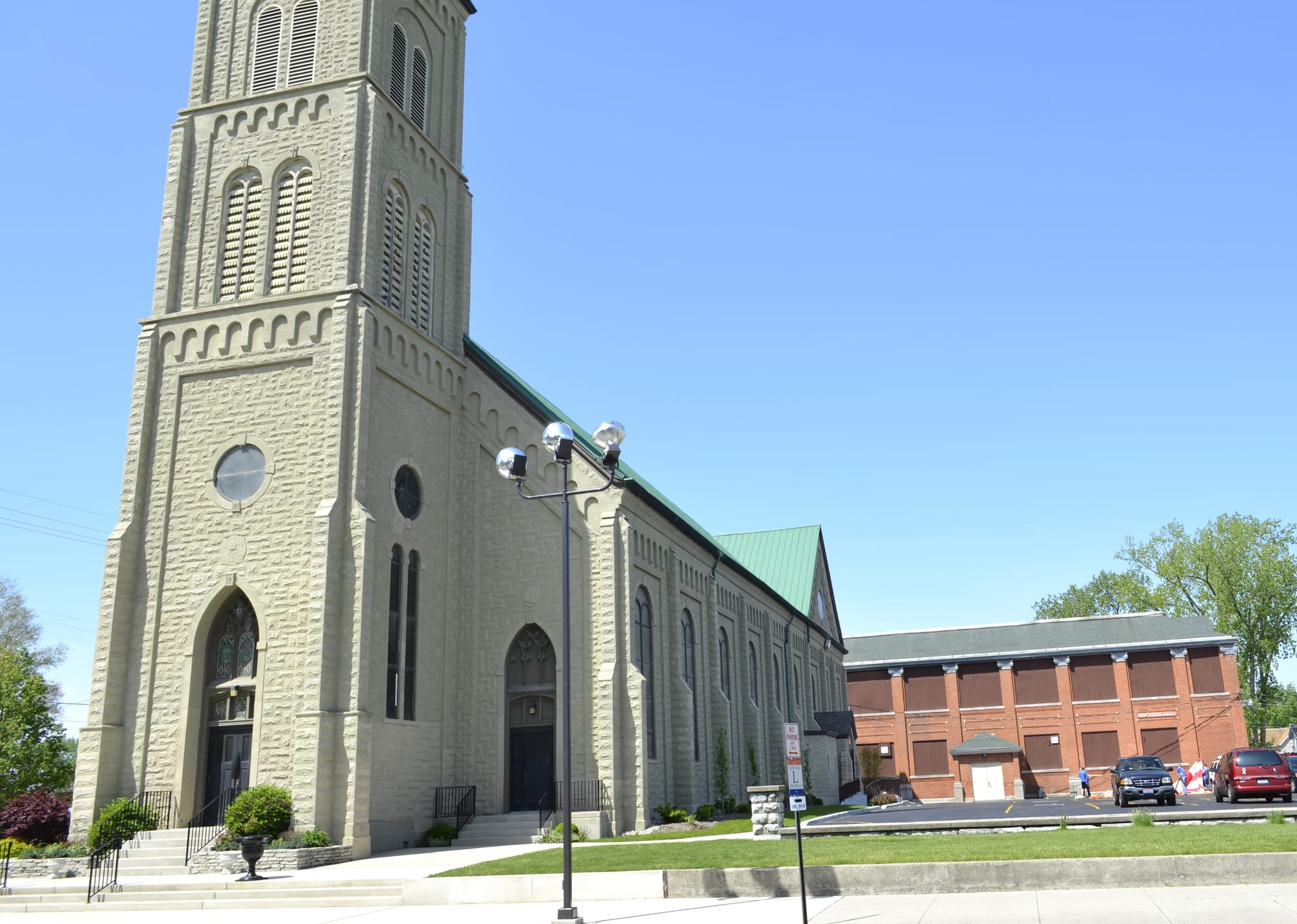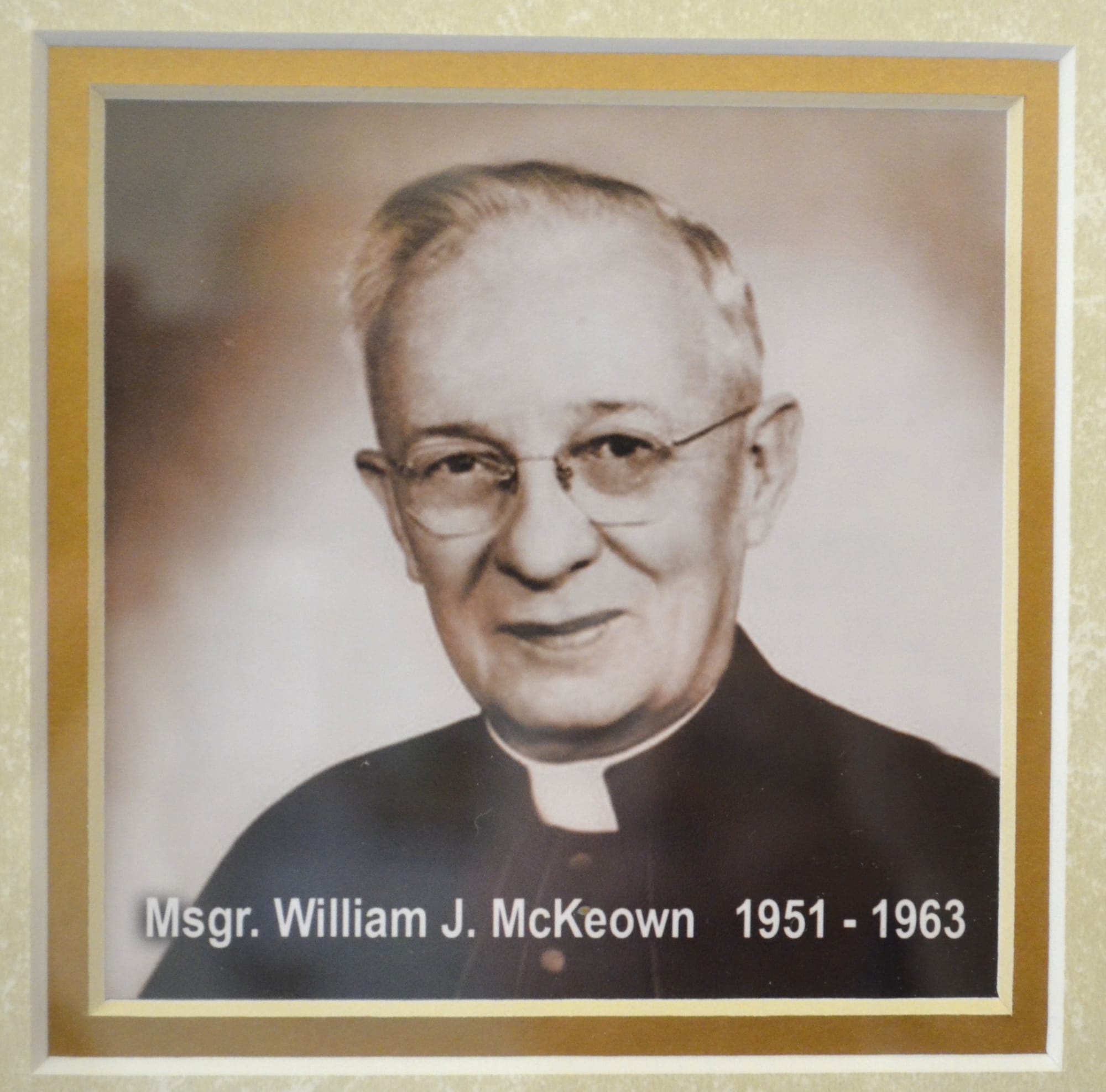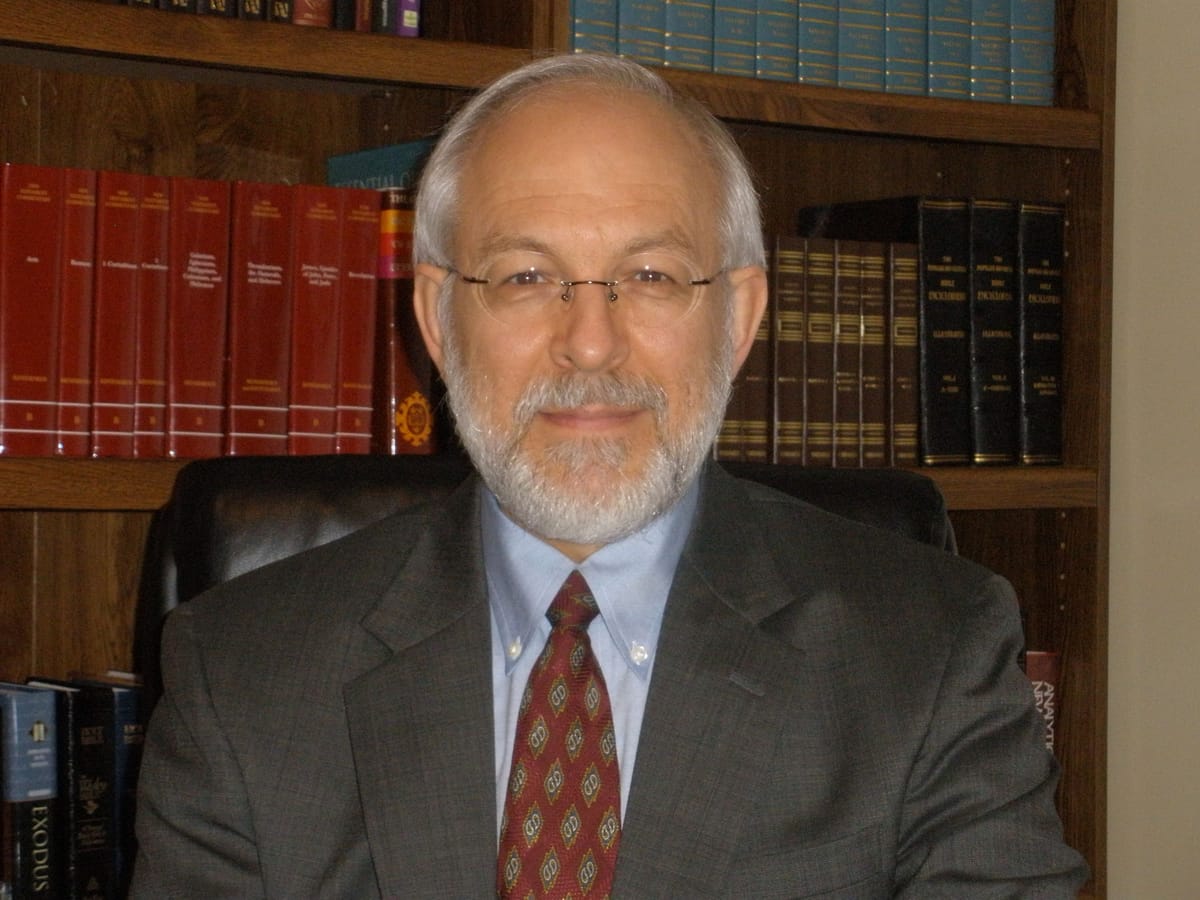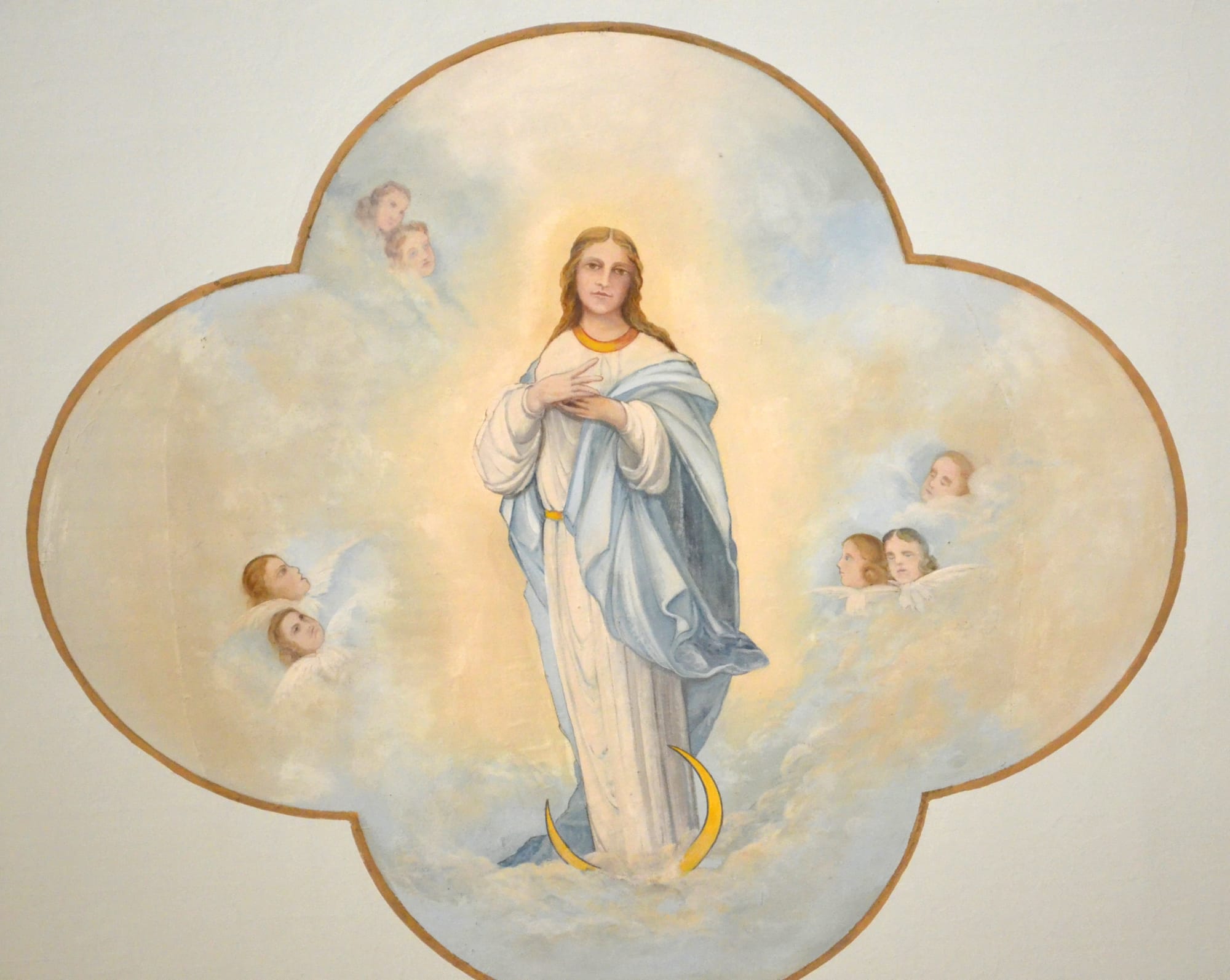Many of our regular readers and those on our CD Ministry know that I was raised as a Roman Catholic. My mother was so VERY Catholic that she encouraged me from a very young age to go to the seminary to become a priest.
Thus, when I was 14 years old (a freshman), I began that 13-year educational journey toward the priesthood. I had been an altar boy since third grade and knew the prayers by heart (in Latin) in order to serve at the mass.
By fifth grade we had moved from the farm north of Ottawa, Ohio to the city of Lima, Ohio where I continued to serve as an altar boy. I spent my fifth and sixth grades at the Catholic school adjacent to the parish church called St. Rose.
Here below is a picture of St. Rose church which I snapped when I made a trip to northwest Ohio in 2014, going right through Lima and the old farm place on my way further north.

The building in the background is the gymnasium where in fifth grade I learned to play (and love) basketball.
The featured photo of the “Blessed Virgin Mary” is the only artwork on the ceiling inside the church. No pictures of Jesus, just “Mary” in “heaven.” And here below is a picture from the gallery in the church foyer of one of the priests for whom I remember serving mass.

For the record, I left the Catholic church when I quit the seminary (for reasons too long to delineate here—no, I was not molested) when I was in my freshman year at St. Joseph’s College in Rensselaer, Indiana in late 1967.
I recently came across the following article from our library archives of the Kingdom Digest. The essay appeared in the October 2000 issue. It was written by Miss Jessie A. Tritt. We have no further information about her or when she penned this piece, but we suspect it may have been in the mid- to late-1900s. It is unaltered by us except for breaking it into smaller paragraphs for easier legibility on small screen devices.
As the Prophet Isaiah had foretold some seven hundred years before, “Behold, a virgin shall conceive, and bear a son, and shall call his name Immanuel” (7:14), so Matthew records the fulfillment. The Babe’s name, “Immanuel,” meant, “God with us.”
Before His birth, He was named by God’s order, “Jesus,” for “He shall save his people from their sins” (Matt. 1:20-23). Mary brought forth her firstborn son (Matt. 1:25).
In His own home region, the people later asked: “Whence hath this man this wisdom, and these mighty works? Is not this the carpenter’s son? Is not his mother called Mary? And his brethren, James, and Joses, and Simon, and Judas? And his sisters, are they not all with us? Whence then hath this man all these things?” And they were offended in him. But Jesus said unto them, A prophet is not without honour save in his own country, and in his own house. And He did not many mighty works there because of their unbelief (Matt. 13:54-58, Mark 6:1-6, Luke 4:14-30).
When the Wise Men from the East found the Babe whose star they had followed, they fell down and worshipped Him and presented Him with gifts; gold, and frankincense, and myrrh, but they did not worship His mother. (Matt. 2:11). The angel Gabriel told Mary that she was blessed among (not above) women. Mary accepted God’s will for her as the handmaid of the Lord.
No promises of greatness were made to her. It was her Son who was to be great, the Son of the Highest, the King on the eternal throne of David, Jesus, the Savior from sin (Luke 1:26-38).
Elizabeth told her that she was blessed among women. Mary again spoke of herself as the handmaiden of God. (Luke 1:43, 48). Mary brought forth her firstborn son. (Lu. 2:7). According to the law of God, she, as any other mother, needed to be cleansed by sacrifice after childbirth. She brought the offering to the poor, “a pair of turtledoves or two young pigeons” (Lev. 12.1-8, Lu. 2:22-24).
At the beginning of His ministry, there was a wedding in Cana. His mother told Jesus, “They have no wine.” He said unto her, “Woman, what have I to do with thee? Mine hour is not yet come.” It was His Father’s business, and not hers, with which He was concerned. He was rebuking her officious interference with His heavenly mission, (Jno. 2:3-4).
As He spoke to a multitude, a certain woman cried out! “Blessed is the womb That bare thee and the paps which thou hast sucked.” But He said, Yea, rather, blessed are they that hear the word of God and keep it.
Spiritual ties were more important than those of flesh and blood, (Lu. 11:27-28), even in considering His own relationship to the virgin mother.
After His resurrection, His half-brothers recognized His Messiahship. Mary and they were with the disciples in the upper room waiting, as He had told them to do, for the Holy Ghost to come upon them.
The last we see or hear of Mary in the Word of God is that she is in this upper room, not as a leader, not being venerated, but as a humble follower of her divine Son and Savior (Acts 1:13-14). He was delivered to death for her as for our offences. He was raised again for her as for our justification (Rom. 4:25).
As to how long Mary lived, and how she died, history is absolutely silent in striking contrast to ecclesiastical legend, which errs as often against refined spiritual feeling as against historic veracity (Mary, Eadie Bible Encyclopedia).
Mary is never to be placed, any more than Scripture places her, upon a level by herself, as distinct from other of God’s chosen servants. Her defects of insight and slowness of heart have been as faithfully set forth, as in the case of these others. Yet the drift of the Papal Church has been in the last half century towards the exaggerated adoration or outright worship of the mother of Jesus. (Eadie, Bible Dictionary).
Mary’s faith and humility exhibit themselves in her immediate surrender of herself to the divine will (Lu. 1:38), her energy and earnestness in her journey of about sixty miles to visit Elisabeth (Lu. 1:39), her spiritual joy in her song (Lu. 1:48), her pondering spiritual things (Lu. 2:19), her keeping her son’s words in her heart (Lu. 2:51).
“As portrayed in Scripture, she is most tender, faithful, humble, patient, loving, but a woman still. The Bible is certainly not the origin of the present state of devotion to her. She has been exalted at the expense of the Son. The worship of Mary began to grow apace. It is spreading still” (Wm. Smith, Dictionary of the Bible.)
The Roman Catholic Litany of the Blessed Virgin has 48 titles for her, including these: Mirror of Justice, Seat of Wisdom, Cause of our Joy, Mystic Rose, Tower of David, Tower of Ivory, House of Gold, Ark of the Covenant, Gate of Heaven, Morning Star, Health of the Sick, Refuge of Sinners, Queen of the Angels. (Litany of the Blessed Virgin, Little Prayerbook for Catholic Children, pages 86-89).
This Litany closes as follows: “We fly to thy patronage, O holy Mother of God; despise not our petitions in our necessities, but deliver us from all dangers, O ever-glorious and blessed Virgin.”
Doubtless, Mary, as a sinner saved by the grace of God, through the propitiation made by her Savior, will grieve at the dishonor done to her Son by this false worship of herself. But consider the grief felt by the Heavenly Father! In all things God wants His Son to have preeminence. All fullness shall dwell in him. (Col. 1:18- 19).
He conceived His eternal purpose in Christ Jesus our Lord (Eph. 3:11). He purposes, in the fulness of times, to gather in one all things in Christ (Eph. 1:9-10). God has highly exalted His Son and given Him a name above every name. Every creature in heaven, earth, and under the earth, shall acknowledge Jesus Christ as Lord, to the glory of God the Father (Phil. 2:9-11).
~END~


